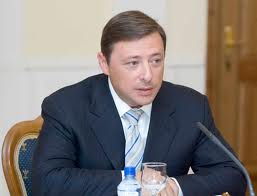
Ethnic Russians and Caucasians Clash in the “Melting Pot” of Russia’s North Caucasus
Publication: Eurasia Daily Monitor Volume: 9 Issue: 141
By:

On July 21, a massive clash between ethnic Russians and Caucasians took place in the central part of the Russian city of Kislovodsk, in Stavropol region of the Northern Caucasus Federal District. Participants in the incident reportedly used knives and guns, and two people died as a result. At least 15 people were identified as participants. Some media reported they were Caucasians and Cossacks, although it was not immediately clear whether these people represented organized groups or had assembled randomly. The local police played down the ethnic character of the clash, and few Russian media outlets reported the ethnicity of the two people killed, perhaps, because they appeared to be of non-Russian origin (https://www.stav.kp.ru/daily/25919/2871891/).
Although the authorities struggled to cast the conflict as a “domestic conflict” and not as a hate crime, the day after the incident, the authorities called a meeting of the local Ethnic Council. Under the watchful eye of Stavropol region officials and Interior Ministry and FSB (Federal Security Service) officers, the council, which includes members of local non-Russian diasporas, adopted a humble tone, stating: “We are addressing city residents, members of the ethnic communities, parents, the elders and the wise: do everything you can to make your children understand that they live in Russia, in a big and strong country, where they are all only part of a larger whole.” While the Russian officials tried to avoid putting blame on any particular ethnicity, a 23-year-old student from Krasnodar region was arrested soon after the police investigation was launched (https://www.stapravda.ru/20120723/massovaya_draka_v_kislovodske_zaderzhan_pervyy_podozrevaemyy_62303.html).
According to the few media reports on the incident, a 21-year-old ethnic Armenian named Jonik was shot dead and a 17-year-old ethnic Georgian named Gia were stabbed to death in the clashes. An unnamed 23-year-old ethnic Karachay was stabbed in the same incident but survived, although he remained hospitalized in intensive care as of July 23. According to other reports, those killed were people of ages ranging from 19 to 26 years old, while the wounded victim was 24 years old. The ethnic Russians involved in the clash were dressed in uniforms, so it is not clear whether they were Cossacks, actual members of the police or part of a paramilitary nationalist group. The chief of the local Cossack group was summoned by the police, according to some reports (https://stavropol.kavkaz-uzel.ru/articles/210132/). Since there have been no mass protests in Kislovodsk following the incident, it is safe to conclude that only ethnic non-Russians suffered casualties.
Stavropol region is the only predominantly Russian territory in the North Caucasus Federal District, which also includes all of the North Caucasus republics except Adygea. Stavropol region is geographically the largest in the North Caucasus Federal District, and its population of 2.8 million is a little less than the largest of the district’s republics – Dagestan, which has 2.9 million people. However, Stavropol region has a solid ethnic Russian majority of 80 percent, but also has sizeable Caucasian diasporas. Ethnic Armenians number 160,000 – six percent of the region’s population – while ethnic Dargins number 50,000, or almost two percent. Numerous other North Caucasian ethnicities also live in the area (2010 census, www.gks.ru). Soon after the creation of the North Caucasus Federal District in January 2010, Stavropol region sought to secede from the newly created administrative unit. In October 2010, an activist group started to gather signatures on a petition to secede from the district on the grounds of increased security risks for its population, but the group’s effort was quickly curbed by the government. One of the Stavropol region’s cities, Pyatigorsk, is the capital of the North Caucasus Federal District and also the chief place of residence of Moscow’s envoy to the North Caucasus, Alexander Khloponin (https://www.nr2.ru/policy/304584.html).
Stavropol region has two major population centers – the city of Stavropol, the region’s capital, which is in the north, and Kavkazskie Mineralnye Vody in the south, which includes the cities of Kislovodsk, Pyatigorsk, Yessentuki, Zheleznovodsk, Lermontov and Mineralnye Vody (https://www.adm-kmv.ru). Despite the clear majority that ethnic Russians enjoy in Stavropol region, a massive influx of North Caucasians, especially from Dagestan and Chechnya, has haunted local officials for some time (https://www.stav-reporter.ru/index.php/2011-01-30-13-09-05/1819——25-132–26–2012–).
In the meantime, a scandalous cultural clash took place on July 15 at the Seliger youth camp, the youth center that is at the very heart of the Kremlin’s youth policy making. This camp has been known as a training ground for pro-Kremlin youth. The Kabardino-Balkarian delegation was expelled from the camp, allegedly for indulging in Muslim prayers on its territory. Republican officials claimed, however, that there was only a personal conflict between the head of the delegation from Kabardino-Balkaria and camp officials (https://kavpolit.com/lyudi-gibnut-za-namaz/). The incident is likely to contribute to a further divergence between increasingly Muslim Kabardino-Balkaria and Russia.
Russian authorities have avidly endorsed Cossack paramilitary formations on a number of occasions. Khloponin saw Cossacks as a way to bolster the ethnic Russian presence in the North Caucasus. However, the Cossacks have not taken hold in the North Caucasian republics, but have gained significant ground as paramilitary militia groups in both the Stavropol and Krasnodar regions. Moscow’s policy objectives clearly clash in the North Caucasus, since the Cossacks are apparently supported and promoted by the Russian government as the vanguard of Russian nationalism while, at the same time, the Stavropol region is promoted as a “melting pot” for the nationalities of the North Caucasus. It is difficult to imagine how Stavropol region can be both a stronghold of Russian nationalism and a “melting pot” for the North Caucasians. It appears that the residents of the Stavropol region who want to secede from the North Caucasus Federal District are more likely to embrace Russian nationalism than accept the region’s role as a “melting pot.”




